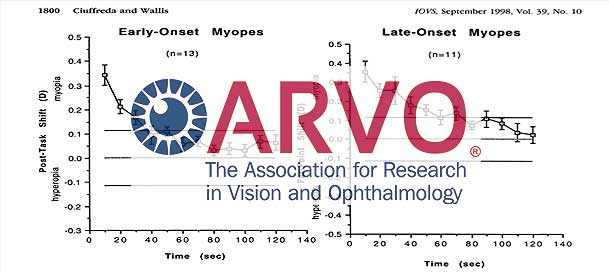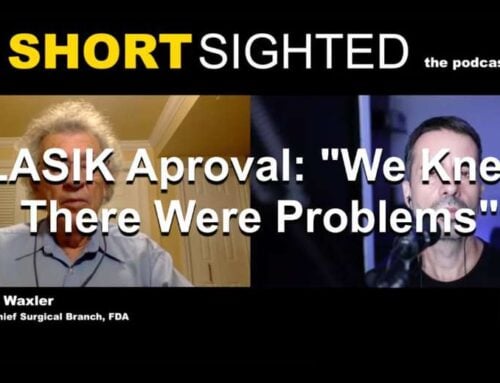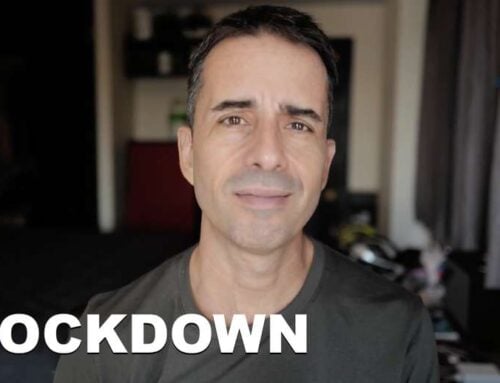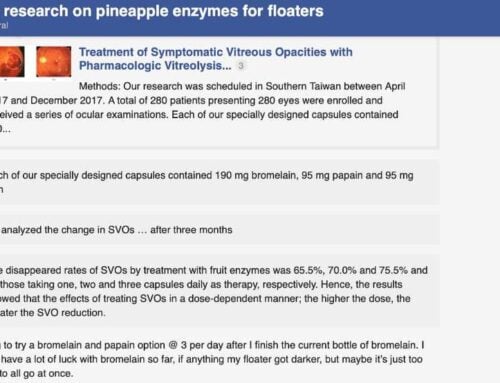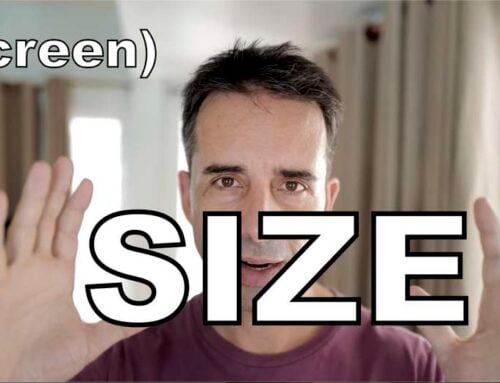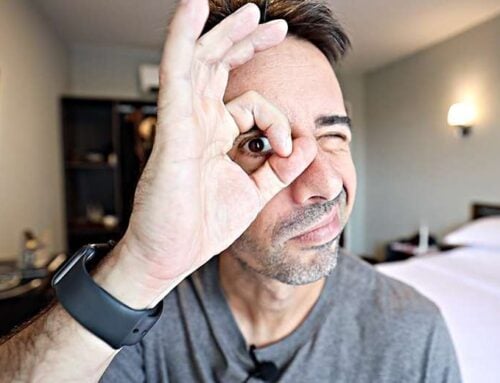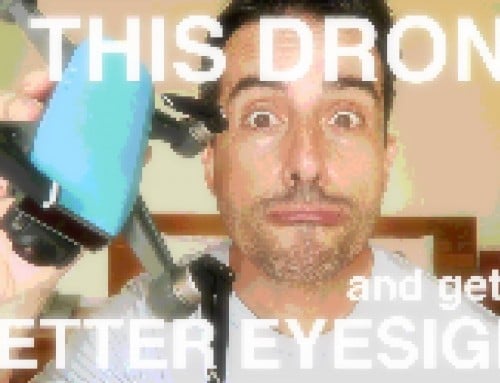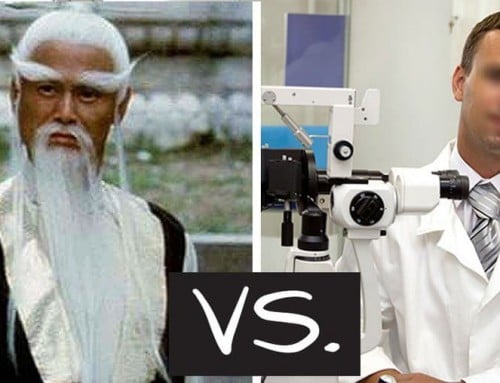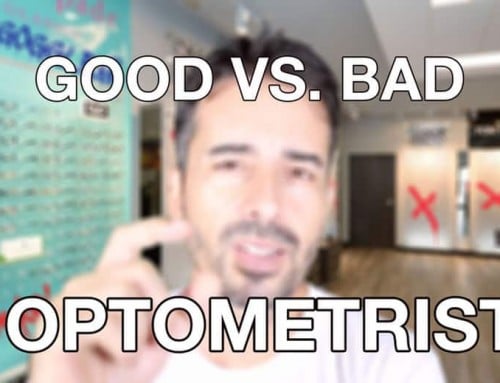Following, a guest post by Jake Steiner, a brilliant practitioner of functional and holistic ophthalmology. Leave a comment if you would like more guest posts of this nature.
—
Technology doesn’t necessarily make us any smarter.
Going to see ophthalmologists, when I travel to a new country, is a bit of a strange hobby of mine. It’s always fascinating to see how money (in a relative sense of wealth of the country), culture (self reliance vs. co-dependence), and the tentacles of Big Optometry™ affect the vision health state of the population.
Rich countries with lots of government healthcare funding tend to have the fanciest doctor’s offices.
It’s not unusual to see equipment that costs hundreds of thousands of dollars, used to make the exact same determinations that I might use a 20 cent tool for. The meaning derived from either, is usually exactly the same.
The level of professional arrogance usually is directly proportionate to the cost of the equipment in the respective office. Titles usually are also thick and many, on the practitioner’s business card, and the ostentatious name plate on his desk. Really, by the time you make it to the man’s desk, don’t you probably also know his name? But that’s not the point. It’s all about professional authority. You must be reminded of how little you matter, in the scheme of things. Bow before the throne.
This time travels took me to the United States of America. By all accounts, this is the capital of professional arrogance.
Mr. Long Titles explains axial myopia to me. Call me unethical, but I came to him under the guise of a clueless patient, looking for myopia advice. It’s a terrible way to find amusement, or perhaps just professional curiosity. What does Mr. Long Titles tell his thousands of clients, about their eyes?
The exam is lengthy and eye wateringly expensive. Somebody has to pay for all that fancy equipment, after all.
It turns out that I have axial myopia. Yes, though I can see 20/20 without glasses, the expensive equipment has determined that I didn’t pay for naught. There if fault in my vision, and I will need the help of this man’s connections to medical science. Ever smugly, he directs me to the gleaming and expensive autorefractor. I recognize the top of the line, most expensive model. Clearly somebody is doing rather well.
Here Is An Interesting Secret: You Can Induce Axial Myopia, For Yourself, In A Matter Of Hours.
Axial myopia, the elongation of the eyeball, is the specter of looming and permanent eyesight deficiency. It’s the monsters under your bed. Axial myopia, they say, once it sets in, is irreversible. You will forever be in the shackles of glasses, high index and with anti scratch, anti reflective, anti fingerprint coating, that’ll be 680 dollars.
Except that none of it is true. It doesn’t take years for axial myopia to happen. It’s not a genetic problem. It’s not irreversible. None of it is even remotely true.
Don’t try to tell Mr. Long Titles this, though. Not only will you be ejected from the office, you’ll also have to endure the wrath of a man who clearly knows more than all of actual current medical science. Try as you like, you won’t find undisputed studies that corroborate his explanations. Take this from me, a guy who woke up this morning with no axial myopia, and yet had a measurable (and true) axial elongation by later afternoon on the same day.
You too, might have axial myopia. And as Alex does say, it doesn’t matter one bit whether you do. Get rid of the strain, challenge your eyesight daily, and whether it’s muscle spasm or elongation, it’ll all go away.
Alex says, Jake. People won’t take your word for these things, on the Internet.
So let’s look at the same journals that Alex likes to quote (not nearly often enough). Bear in mind that these are the journals that Mr. Long Titles should be reading, while he’s on the toilet, or otherwise when the urge strikes to further his education. Though of course he doesn’t, like most of his peers. They are already infallible and all knowing, ever since med school gave them the holy blessing of their first official title.
Facts about Axial Change: IOVS
Investigative Opthalmology & Visual Science. That’s the title, ominously including the word “investigative”, of one of the most respected medical science journals in the field. Don’t worry though, the word “investigative” by default keeps out most practitioners you’re likely to meet. The secrets contained within the pages of IOVS are mostly safe from your eye doctor’s non-prying eyes.
Here is what IOVS publishes, an interesting (and not otherwise surprising) study about axial elongation:
“Transient Axial Length Change during the Accommodation Response in Young Adults”
That, just the title. Does it say, transient? As in, it’s temporary? Not possible, would huff Mr. Long Titles.
Let’s look at the article:
PURPOSE. To measure the degree of transient axial elongation during the accommodation response in emmetropic and myopic young adults. To evaluate the effect of refractive error and accommodative demand on transient axial elongation of the eye.
METHODS. Axial length of the right eye was measured in 30 emmetropes and 30 myopes, by using the IOLMaster (Carl Zeiss Meditec, Inc., Dublin, CA), while accommodative stimuli of 0, 2, 4 and 6 D were presented with a Badal optometer.
RESULTS. Axial length increased in both emmetropic and myopic subjects during short periods of accommodative stimulation. Greater transient increases in axial length were observed in myopic than in emmetropic subjects. The mean axial elongation with a 6-D stimulus to accommodation was 0.037 mm in emmetropes and 0.058 mm in myopes (P = 0.02). The degree of transient axial elongation correlated well with the stimulus to accommodation in emmetropes and myopes. Anterior chamber depth decreased, on average, by 0.19 mm in emmetropes and 0.18 mm in myopes when observing a 6-D stimulus to accommodation.
CONCLUSIONS. During relatively short periods of accommodative stimulation, axial length increases in both emmetropic and myopic young adults. At higher levels of accommodative stimulation, a significantly greater transient increase in axial length is observed in myopic subjects than in their emmetropic counterparts.
—
I have to admit, I felt quite honored about Alex’ invitation to post in his excellent blog. I could have just gotten straight to quoting the article, rather than preening before you, for several paragraphs.
The article was published in 2005. A decade and a half has passed since that particular insight into the nature of axial elongation. Many articles have come before it, and since. Even the author, somewhat credible. Edward A. H. Mallen is with the Department of Optometry at the University of Bradford.
Edward used excellent equipment to empirically test axial elongation. He found that axial length increases in a rather short time, and that it is in fact transient. Anyone with the equipment can easily repeat the process and come to the same conclusions. It’s not likely to be done by Mr. Long Titles, since he (nor anyone like him) is going to look to disprove his own gospel.
And that’s how axial elongation is going to remain the mythical tale of the irreversible cause of your myopia. The mafia bosses of the world might look on with great envy, at the ruthlessly efficient strong arm tactics and great profits of the vision “health” industry.
For your reading pleasure, here is the full article about transient axial change, in PDF form.
** This post allows for comments. **
Do feel free to add below – in particular if you want to get more posts from me, it may help sway Alex’ to see some feedback here.

